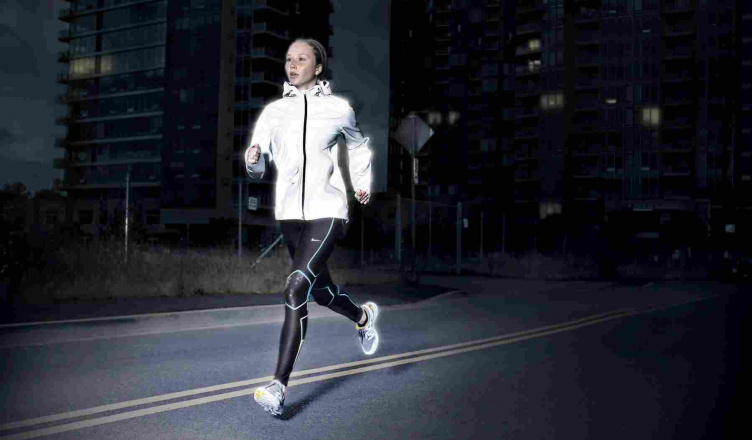We choose a known course. In the dark, there is no question of leaving room for the unknown. So we choose a circuit that we are used to and that is safe. Especially since at night, it will look completely different from your daytime runs. We avoid venturing on new paths which we do not know the frequentation and where we could get lost. There will be plenty of time to explore during the day during the long weekend outing.
We make sure to be visible. It is important to wear clothing with reflective strips to be visible to motorists, bikers, and cyclists who may cross our path. Clear colors, even fluorescent, and reflective bands everywhere (leggings, jacket, gloves, hat …) will be your best allies in the dark. A yellow safety vest can also help gain visibility.
We equip ourselves with a headlamp. To know where you set foot and be even more visible at night, a small lamp with an elastic band to put around your head to watch where you are going is more than useful. We will choose if possible with a light power of 200 lumens minimum to be able to pass everywhere, even in the night without fear of tripping on a root or hurting my ankle because of a hole.
We multiply the layers to be warm but not too much. Difficult in winter to choose the right equipment to be warm enough without sweating more than reason. First reflex: protect the extremities. We put on gloves (not too thick but if possible windproof) and a thin cap but in micro-fleece. Then the rule is to multiply thin layers. First, a long-sleeved T-shirt that wicks away breathing, then a waterproof but breathable windbreaker to protect yourself from the elements. The leggings will be a little thicker than the one used in spring. It is best to be a little cold at first but to be comfortable once the body has warmed up by running. If it is really cold (below 0 degrees), we will opt for leggings lined with micro-fleece and a third thin layer between the T-shirt and the windbreaker. On the other hand, we forget the down jacket which is not breathable enough.
We continue to stay hydrated. In the cold, the feeling of thirst is less present, but that is not why we sweat less and that we must drink less. To avoid swallowing too cold water, you opt for a water bag with a pipette that you will carry on your back. Body heat should warm the liquid a little. And we try to keep the rule of half a liter of water drunk per hour of racing. If necessary, you put an alert to take a sip every 10 minutes on your watch or phone.
We warm-up before running. The cold can increase the risk of muscle breakdown. The warm-up stage is more crucial than ever. But beware: we forget about passive stretching before running (more harmful than useful) and we opt for dynamic warm-ups based on small jumps. We start to trot by gradually accelerating then we do a few ranges over a few tens of meters each time, to repeat two or three times (knee rise, buttocks heels, legs stretched, not chased, running backward). We finish with two or three progressive accelerations over 100 meters to increase the cardio. After that, your jogging can start safely.
Opt for shoes suitable for winter. If you run on sometimes muddy trails or paths with many puddles, it may be useful to wear shoes with a Gore-Tex membrane or equivalent. This prevents water from entering the shoe while retaining sufficient breathability.
